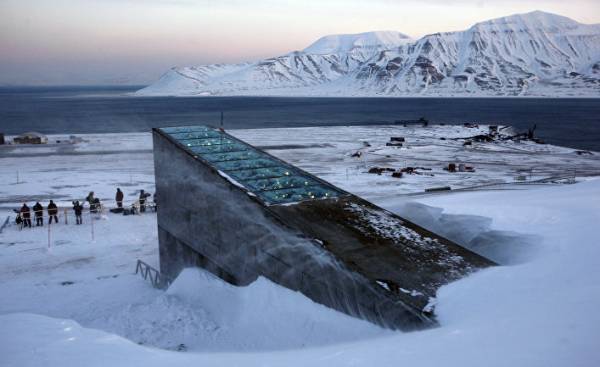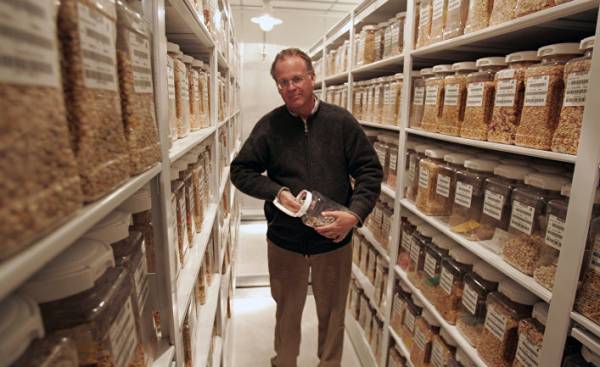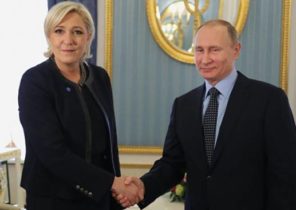
Scientists on a global scale to create repository of everything — from seed to ice and milk of mammals, in pursuit of a way to save the rapidly disappearing natural order.
Incredibly warm October evening last year one of the maintenance workers witnessed the rapid streams of water gushed into the hallway of the world semenaxreview located at a depth of about 400 feet (122 meters) inside the mountainside on the Norwegian island of Spitsbergen near the North pole. The rain came with the storm. This time of year, the temperature usually drops well below zero; and as the water closed energy system available at the facility electric pumps were useless. The underground shelter can accommodate more than 5,000 species of major food crops, including hundreds of thousands of varieties of wheat and rice. It was supposed that it will be impervious modern version of Noah’s ark for plants, a sort of life raft in the fight against climate change and disasters. Local firefighters helped to pump water out of the tunnel until, until the temperature dropped and the water is not frozen. Then the residents located at the foot of the mountain village brought shovels and axes and broke the ice by hand.
Several Norwegian radio stations and Newspapers reported the incident immediately, but the international publicity the incident received only in may when it became clear that President trump, most likely, will take US from the Paris climate agreement. Soon after this news from Svalbard reached all corners of the world, and the headlines were full of statements such as “the”doomsday Vault” could not resist global warming.” Nobody seemed to care that since the flood it has been more than six months and that stored seeds did not hurt. That year was the third consecutive record global temperatures for the entire history of observations and a record low area of the Arctic ice, continued melting of the vast permafrost areas; and argued that the endangered are about 60% of Primate species. All these facts and so signs seemed more hopeless the future of the planet, and then there’s the press began to pour oil on the fire with tales about the futility of our attempts to preserve at least something of the surrounding abundance.
Storage of seeds is perhaps the most famous project in the framework of the world campaign to establish a warehouse of rare and endangered species to ensure their conservation. Fortunately, over the past decade, scientists, governments and even private companies are perfectly proficient in the creation of such deposits environment. In the zoo San Diego, for example, the cryogenic method using liquid nitrogen keep the culture viable cells, semen, oocytes and embryos are approximately 1,000 species of animals and plants. In a huge freezer National ice laboratory in Lakewood, Colorado, contains a total of about 62 000 ft (19 000 m) of ice cores taken from rapidly melting glaciers and polar ice caps of Antarctica, Greenland, and North America. At the Smithsonian national Zoological Park in Washington holds the world’s largest collection of frozen milk exotic animals, large (whales) and small (under threat of the disappearance of fruit bats), which aims to identify ways to feed the most vulnerable members of any kind of young. International project entitled “the Ark of amphibians” engaged in foreign preservation by relocation of amphibians are the most endangered class of animals indoors for their safety and collection of semen.
It is human nature to rush to collect all that can disappear. During the Renaissance there was a so-called cabinets of curiosities, where the rich merchants and aristocrats exhibited a personal collection of mastodon bones, fossils, stuffed animals and various dried and pickled creatures. Some anthropologists believe that their area of expertise appeared along with the nostalgia of Europeans for the natives, which wiped out they brought disease and weapons. This feeling resulted in them a desire to collect objects of national life, fragments of the dying languages, and sometimes even living creatures. Zisis Kostakidis, President of the International society for biological and environmental repositories, an organization advocating on behalf of the order of 1 300 biobanks, which contain a great variety of samples, including viruses and reproductive cells clouded leopards, stated that the world was seized with the fever of collecting, comparing it with the global space race. “There is a feeling,’ he said, and quite strong that we are losing biodiversity faster than they are able to comprehend it”.
Scientists are increasingly coming to a consensus about that at the moment we live in the era of the Anthropocene, the epoch of man in the global natural ecosystems. We’re responsible for the extinction of species, not some asteroid or the eruption of a volcano. The changes go far beyond the issue of species extinction: we have changed the atmospheric composition and chemical environment of the oceans. For several decades we have managed to distort biological, chemical and physical reality, which had remained unchanged for millennia. And now, in the face of these incomprehensible metamorphosis, we are desperately trying to preserve and protect what little is left. Scientists began to study the psychology of such a human reaction — one of such books is called, for example, “the Anthropology of extinction: essays on death of a culture and species”. In a sense, our environmental banks — those cabinets of curiosities, but in the era of the Anthropocene — a tribute to the fantastic magnificence of the world in a specific geological time before he will leave with no refund.
 © AP Photo, Eduardo Verdugo)Dr. Thomas Paine in selenoprecise in Mexico
© AP Photo, Eduardo Verdugo)Dr. Thomas Paine in selenoprecise in Mexico
We build these banks in order to better understand and, perhaps, save our endangered world. The plan is to study these samples and ensure their preservation for the scientists of the future, which is likely to be more versed in technology than we are, and, hopefully, smarter. Geneticists are able to clone animals; to return the genetic diversity of the species on the brink of extinction through in vitro fertilization; to rewrite the genomes; and to produce synthetic DNA. Special glaciologists reconstruct the ancient climate and atmospheric phenomena (and predict future), studying locked in the ice molecules. Marine biologists are grown in underwater reserves of rare coral species. Botany not so long ago, germinate a delicate plant with white flowers, using genetic material from seed proteins buried in the permafrost of Siberia 32,000 years ago. What we will be able in 10 000 or even a hundred years?
But the world, as always, is changing — and today we will intensify and accelerate the process in ways that do not always have the full picture. After all, this change affected also the banks themselves. Things can go wrong: power outages, malfunction of the backup generators, fires, floods, earthquakes, pollution, shortage of liquid nitrogen, war, theft, neglect. In early April, the malfunction of the freezer cold storage facility of the University of Alberta has caused the melting of hundreds of samples of ice, turning the frozen information about tens of thousands of years existing on Earth climate, pools are one of the unfortunate consequences observed glaciologists compared with those that are formed in the locker rooms pools. Data about the contents of these repositories, genomes, history of the origin of species — can be stolen, damaged, lost or just formatted to such a state that in the future they will not be decrypted. Such concerns come to mind Oliver Ryder, Director of genetics Institute of environmental studies at the zoo San Diego, and do not allow him to sleep at night. “I’m not just afraid that something bad happen,’ he told me. Bad things will happen, one way or another. This is the usual order of things.”






